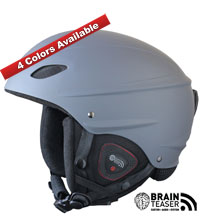|
Newsletter Sign-Up
Sign up for All Sport Protections newsletter updates. Plus get registered for a chance to win some sweet gear!.
|
|
|
 |
|
|
Ski Injury Overview
The most common injuries in skiing are typically to the knee, thumb and head. The primary concern for skiers is sustaining a tear in the anterior cruciate ligament (ACL), the knee joint, as it is instinct to fall forward during a loss of balance, and skis tend to force a knee in uncomfortable positions when falling or skiing out of control. When you fall backwards while holding a ski pole, the handle grip may push against the thumb causing a tear in the Ulnar collateral ligament or even a bend or break in the Phalanx bone of the thumb.
Skiing Head injuries, although not very common, can still be quite dangerous.
Ski Head injuries typically happen during either a collision with another rider, impact with a snow surface, or from a lift accident. The injuries are usually minor and non life-threatening, such as surface abrasions or lacerations, however more severe injuries can include unconsciousness or skull fractures.
Ski Injury Prevention Tips
- Be open to receiving proper instruction. Skiers who take a few lessons by a professional are far less likely to get injured than those that "self teach".
- Have your equipment checked regularly to ensure that there's a good fit and everything is in working order.
- Warm up and cool down before and after each run. This is an easy way to prevent muscle injuries.
- Recognize when you need a rest, or something is beyond your skill level.
Proper Prevention with Ski Equipment
Using the correct ski protective gear to prevent injuries such as thumb fractures is vital. Wrist guards and protective gloves stabilize the wrist and lower arm to provide more support during a fall. They disperse the force of the impact into the guard instead of the wrist. Knee support braces and pads also contribute to the stabilization and prevention of ACL injuries.
Wearing a ski helmet and ski goggles that fit correctly is also key to prevent snowboarding injuries. They protect the head and face from impact, abrasions, and allow for proper sight and UV protection on the slopes.
|
|
|
|










